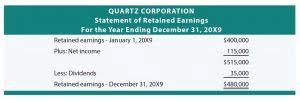
By spreading the cost of an asset evenly over its useful life, companies can predict their annual depreciation expense with precision, aiding in tax planning and compliance. This predictability QuickBooks Accountant allows businesses to forecast their taxable income more accurately, which is particularly beneficial for long-term financial planning and budgeting. On the income statement, the annual depreciation expense reduces the company’s reported earnings before tax. This reduction can be beneficial for businesses seeking to manage their taxable income, as it lowers the amount of profit subject to taxation.
Accounting software
A company may elect to use one depreciation method over another in order to gain tax or cash flow advantages. To calculate straight-line depreciation, you first need to know how much the asset cost and how much it will be worth when you’re done using it, which is called the salvage value. For example, if you buy a copy machine for $1,000 and expect it to be worth $200 after ten years, you would subtract the salvage value from the purchase price. Each year, you would deduct $80 from your taxes, making it easier to manage your expenses. The DDB is calculated the same way as the straight-line method, except that the rate is 150 percent of the straight-line rate.
- Straight line method is also convenient to use where no reliable estimate can be made regarding the pattern of economic benefits expected to be derived over an asset’s useful life.
- The IRS specifies the depreciation method and rate that must be used for tax purposes in a system called the modified accelerated cost recovery system (MACRS).
- Different methods of asset depreciation are used to more accurately reflect the depreciation and current value of an asset.
- The straight-line method is a popular choice for its simplicity, but it has limitations.
What Does Purchasing on Account Mean?
Depreciation rates used in the declining balance method could be 150%, 200% (double), or 250% of the straight-line rate. When the depreciation rate for the declining balance method is set as a multiple, doubling the straight-line rate, the declining balance method is effectively the double-declining balance method. Over the depreciation process, the double depreciation rate remains constant and is applied to the reducing book value each depreciation period. Straight-line depreciation can be used for most tangible assets, such as buildings, vehicles, machinery, and equipment.
Tax Savings Comparison: Regular Taxpayer vs. Real Estate Professional
Tax regulations, like those outlined in the Internal Revenue Code (IRC), may have specific guidelines for calculating salvage value, which can differ from financial accounting practices. Businesses must ensure compliance with these distinctions to maintain accurate reporting. In most depreciation methods, an asset’s estimated useful life is expressed in years. However, in the units-of-activity method (and in the similar units-of-production method), an asset’s estimated useful life is expressed in units of output. In the units-of-activity method, the accounting period’s depreciation expense is not a function of the passage of time. Instead, each accounting period’s depreciation expense is based on the asset’s usage during the accounting period.

Request a Demo 2.0 (Tax advisor or accountant)

An organization can choose different methods of depreciation for financial reporting purposes and for tax purposes. The IRS specifies the depreciation method and rate that must be used for tax purposes in a system called the modified accelerated cost recovery system (MACRS). The two methods used under MACRS are the straight line method and the declining balance method. A company acquires manufacturing equipment for $50,000, with an estimated salvage value of $5,000 and a useful life of ten years. To calculate the depreciable cost, the company subtracts the salvage value from the purchase price, resulting in $45,000. Dividing this amount by the useful life of ten years yields an annual depreciation expense of $4,500.
- To amplify this step, assume that a retailer had recorded depreciation on its fleet of delivery trucks up to December 31.
- This is unlike the straight-line depreciation method, which spreads the cost evenly over the life of an asset.
- For your business, this means the method ignores the potential earning power of money over time, which could lead to suboptimal management decisions if not carefully considered.
- Most businesses set minimum amounts to decide if they should depreciate an asset or expense it immediately.
- The annual depreciation expense is $1,200, the quarterly depreciation is $300, and the monthly depreciation is $100.
- Useful life is the estimated period an asset is expected to remain productive, influenced by factors such as industry standards, historical usage, and technological advancements.
When you drop your smartphone and shatter its screen six months after buying it, you’ve just seen depreciation firsthand—assets losing value over time through use, wear and tear, or becoming obsolete. Straight line depreciation method charges cost evenly throughout the useful life of a fixed asset. Useful life is the estimated period an asset is accounting expected to remain productive, influenced by factors such as industry standards, historical usage, and technological advancements. While GAAP and IFRS provide frameworks for estimating useful life, businesses must make reasonable assumptions based on their specific circumstances.
Which Depreciation Method Should I Use?

This method is ideal for assets that wear out consistently over time, such as office buildings, furniture, and machinery. In this article, we explore the formula, what does straight line depreciation mean examples, journal entries, and advantages of the Straight-Line Method. The straight-line and accelerated depreciation methods differ in how they allocate an asset’s cost over time. This straight line method for depreciation helps in allocating or spreading the cost throughout the life in order to find out what should be the probable worth of it after a time period.
